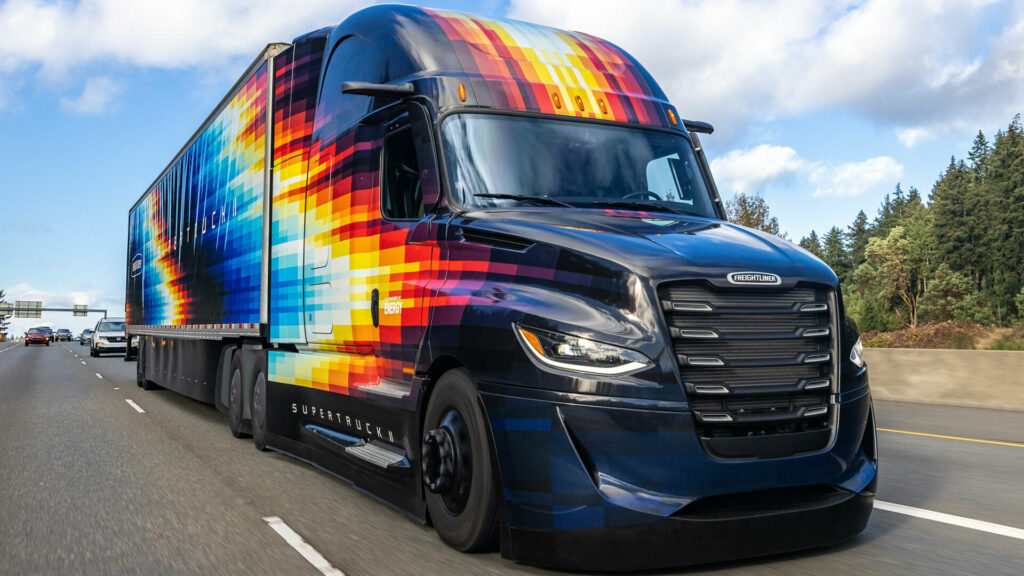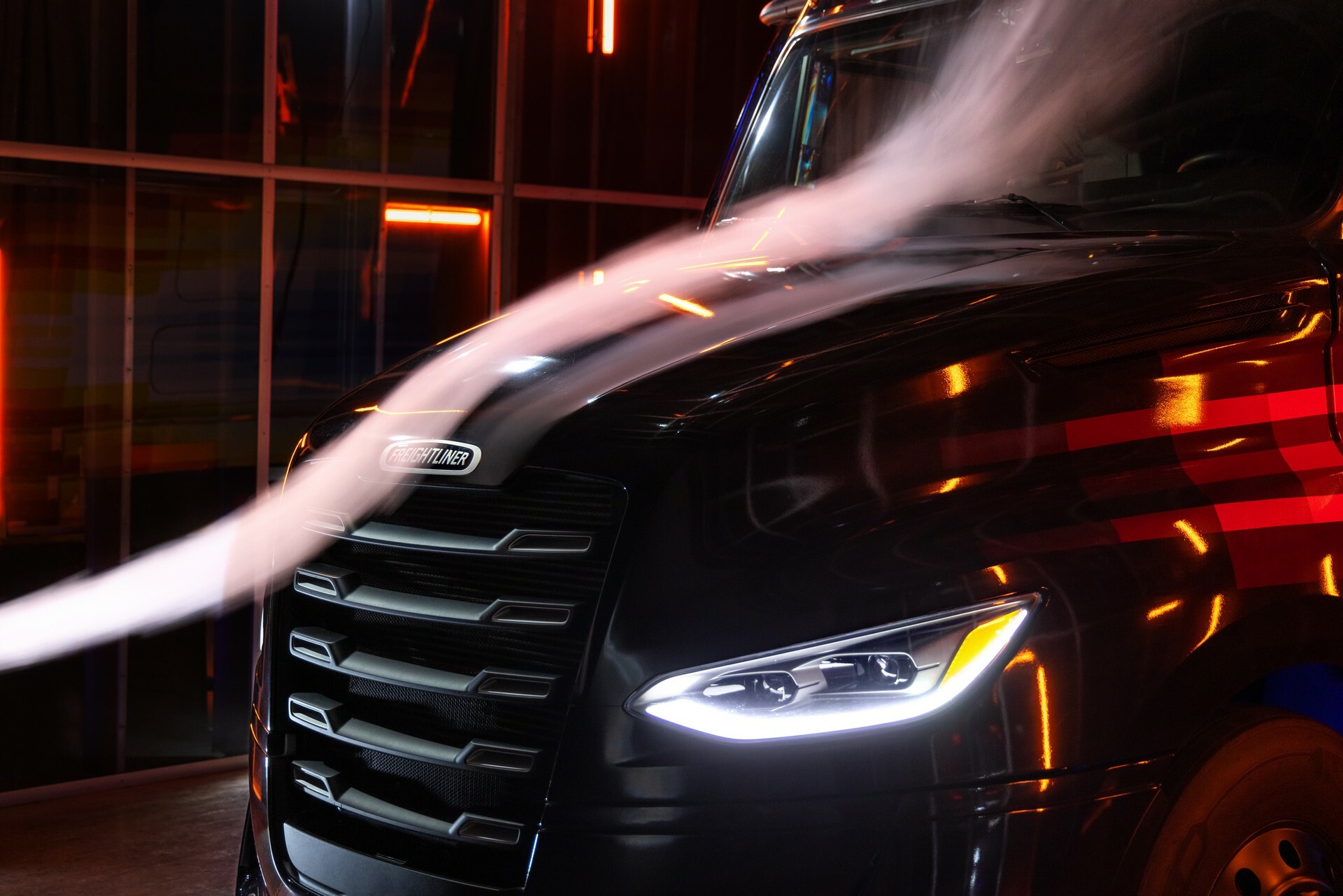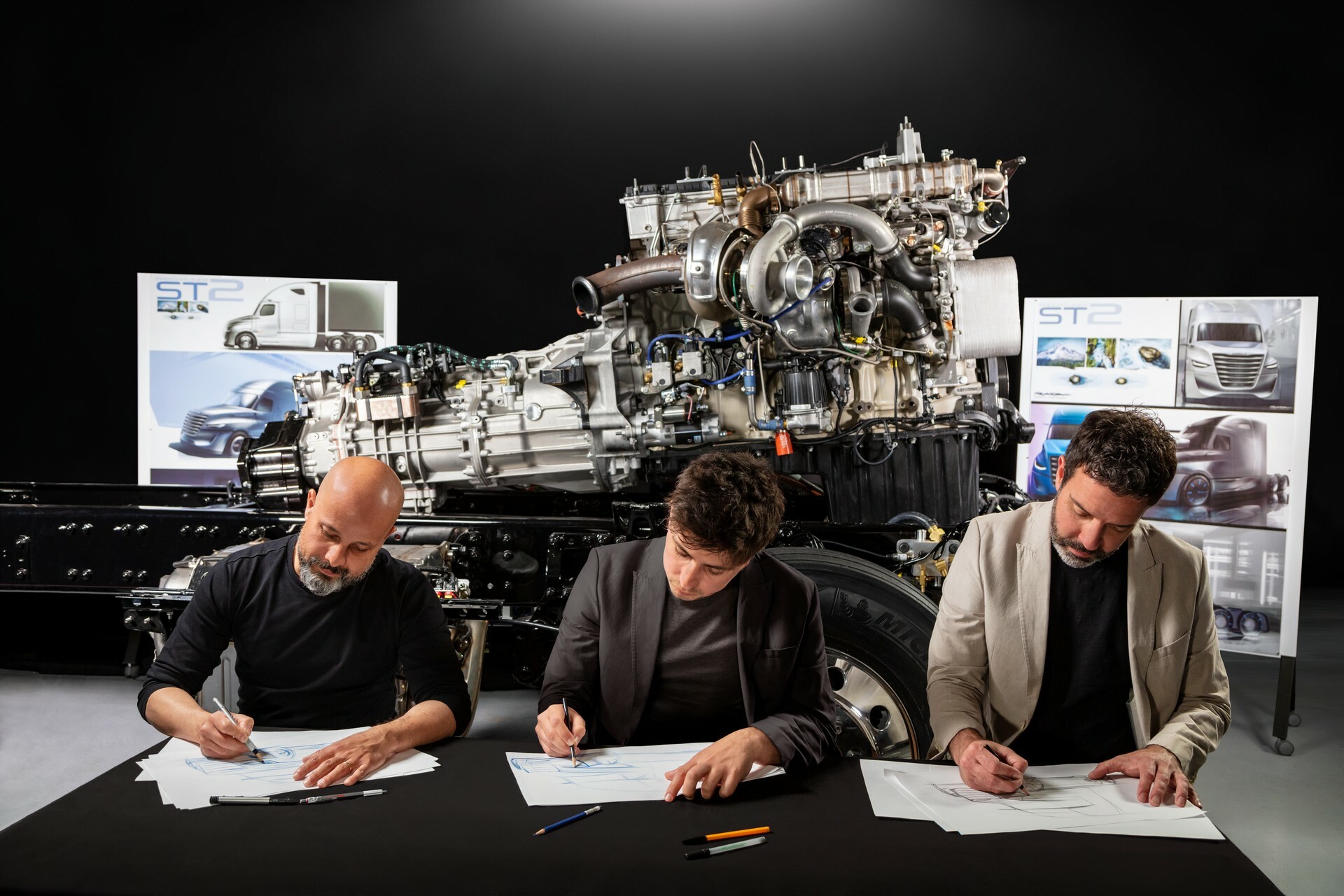Hydrogen and electric semis have been grabbing headlines, but the diesel era is far from over. That isn’t necessarily a bad thing as the semi of the future could be far more fuel efficient.
Freightliner is making that clear with the SuperTruck II, which builds on the legacy of the original SuperTruck and was partially funded by the U.S. Department of Energy.
The focus on efficiency is immediately apparent as the SuperTruck II is the most aerodynamic truck ever built by Freightliner. The model is based on the Cascadia and has a new front end that was ‘sculpted by air.’
Also: Electric Freightliner eCascadia Arrives In 2022, Could Beat Tesla Semi To Market
Besides an aerodynamic front bumper with flowing lines and new intakes, the model has a new hood, a revised grille, streamlined doors, and new chassis fairings. The National Highway Traffic Safety Administration also granted an exemption to allow for the use of digital side mirrors and Freightliner noted they have shown great promise in improving visibility and safety, which “supports advocacy for future regulatory changes that would permit the widespread adoption of this advanced technology by manufacturers.”
That’s just part of the story as the SuperTruck II has active aerodynamics that help to reduce drag. When the truck reaches highway speeds, side extenders and a roof spoiler extend to minimize the gap between the cab and trailer. The model also sports an Aerodynamic Height Control system, which lowers the vehicle so that it sits “just inches off the ground for additional aerodynamic improvements.”
Engineers and designers didn’t just focus on aerodynamic efficiency as there were other improvements to be had. One of the biggest resides under the hood as the SuperTruck II has been equipped with the most efficient powertrain ever installed in a Freightliner.
The company didn’t go into many specifics, but the model has a 13-liter Detroit turbodiesel engine that is connected to a 13-speed transmission. The powertrain also incorporates a split cooling system that “consists of high temperature and low temperature cooling circuits, working in tandem with two-stage turbocharging and exhaust gas recirculation cooling on the engine.”
Other highlights include smart lubrication and adaptive tandem axles, which automatically shift from 6×4 to 6×2 at highway speeds. The model also sports specially developed low rolling resistance Michelin tires and a 48-volt electrical system that uses lithium-ion batteries. The latter allowed for a new electric steering system and an EcoSail feature that can turn the engine off when not needed.
Thanks to the numerous new features and improvements, aerodynamic drag was reduced by more than 12 percent compared to SuperTruck I. Likewise, there was a 5.7 percent reduction in fuel consumption as well as a 12 percent reduction in tractor rolling resistance.
While SuperTruck II is essentially a technology demonstrator, Freightliner noted a number of its features could potentially go into production. Daimler Truck North America also noted SuperTruck III is on the horizon and will be a “hydrogen fuel cell electric tractor that exceeds heavy-duty long-haul sleeper performance, efficiency, and range requirements without compromising payload.”














